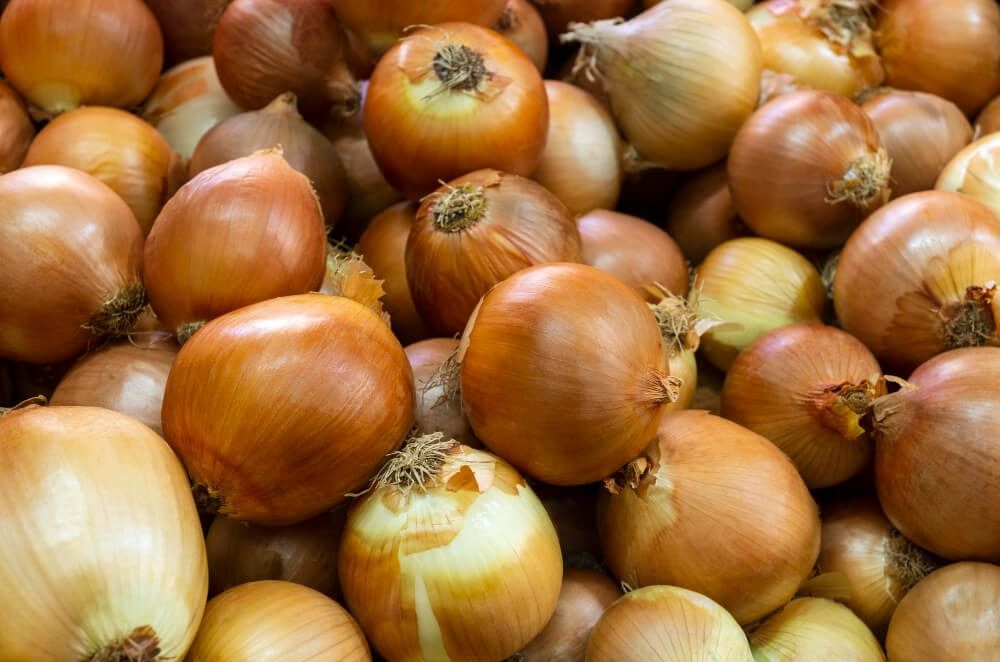W13 Onion Update: Central Asia Grapples with Oversupply as Philippines Faces Potential Shortage

Central Asian Onion Glut Creates Export Challenges for Kazakhstan
The Central Asian onion market is grappling with the consequences of overproduction, leading to declining prices and export challenges. The 2023/24 marketing year (MY) witnessed a significant surge in onion production across Central Asia, leading to a regional oversupply and subsequent export difficulties. Kazakhstan, Russia, Uzbekistan, and Tajikistan all experienced substantial increases in onion harvests. Kazakhstan's production alone rose to 1.1 million metric tons (mmt) in 2023. This exceeded domestic needs by over 3.5 times, with annual consumption being around 300 to 320 thousand metric tons (mt). Similar trends were observed in neighboring countries, with Russia experiencing an 11.2% year-on-year (YoY) increase to 1.78 mmt, and Uzbekistan with a 30% YoY increase to 1.3 mmt.
Kazakhstan exported over 86 thousand mt of vegetables in Jan-24 and Feb-24, excluding the exports to the Eurasian Economic Union. However, deteriorating onion quality approaching April and competition from early harvests in Tajikistan and Uzbekistan further limited export opportunities. The oversupply situation has led to a sustained decline in onion prices across the region since May-23. Reduced import demand and logistical challenges associated with shipments through Russia further exacerbated the situation.
The onion harvest in Kazakhstan has increased by 23.1% or 211.8 thousand mt over the past five years, highlighting a long-term trend contributing to the current overproduction situation. The Kazakh government is actively seeking solutions to prevent similar situations in the future and mitigate risks for domestic producers. This includes exploring new export markets through the country's export operator.
El Niño Threatens Philippine Onion Supply, Prompting Potential Early Import Resumption
The Philippine onion industry is facing potential production shortfalls due to the El Niño weather phenomenon, triggering the spread of armyworms, a destructive agricultural pest. The Philippine Chamber of Agriculture and Food Industry (PCAFI) reports that approximately 45% of onion plantations have been impacted by armyworms. This pest infestation can reduce onion production by 20 to 30%, creating a supply gap. Resuming onion imports earlier than planned could help mitigate the supply gap and stabilize prices.
Philippine onion production in the 2023/24 season is estimated at 242 thousand mt, while annual consumption is anticipated to reach at least 262 thousand mt, highlighting the potential supply shortfall. To address the anticipated shortfall and ensure sufficient domestic supply, the Philippines may need to resume onion imports as early as May-24. If production declines significantly, the Philippines may need to import up to 60 thousand mt of onions to meet domestic demand.
The PCAFI had previously advocated for a suspension of onion imports until Jul-24. However, the current situation suggests a need to potentially restart imports as early as May-24, potentially impacting the tail-end of the Philippine onion harvest season, which extends until Apr-24. A significant discrepancy exists between farm gate prices of USD 0.78 to 0.80 per kilogram (kg) and retail prices for red onions with USD 1.13 to 2.26/kg, and white onions with USD 0.94 to 2.26/kg.





